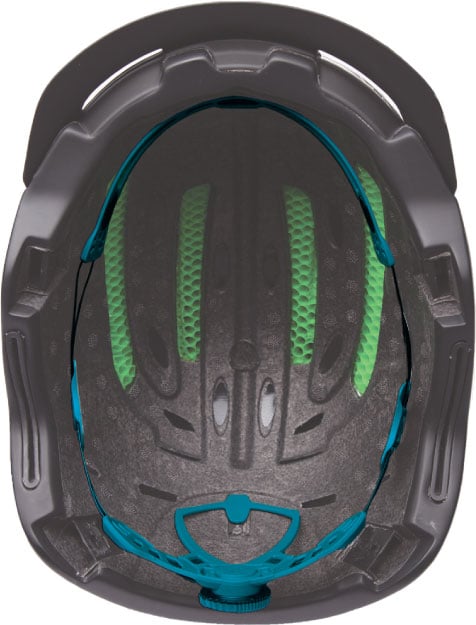You don't need to be Nicholas Cage or Tom Hanks to have all the answers, you can just wear the Smith Code MIPS Helmet. Built with top-notch MIPS technology and Koroyd® construction in an un-assuming package, the Smith Code MIPS is the stylish dome piece you need for some seriously low-profile protection this winter. A BOA® 360 Fit System allows you to find your perfect fit, while the removable goggle clip and beanie compatibility give you tons of flexibility. Crack the code of head protection with the Smith Code MIPS Helmet.
Construction
Lightweight In-Mold Construction – Low profile In-Mold designs combine a polycarbonate shell with EPS liner to provide superior impact protection and extreme light weight.

Zonal Koroyd® Coverage – For lightweight, energy-absorbing and ventilated impact protection. Koroyd® provides superior impact absorption, design flexibility, and ventilation when compared to materials traditionally used in helmet construction. By utilizing crumple-zone cylinders that crush uniformly on impact, Koroyd® manages energy more efficiently with less volume than any other protection material on the market. Unlike traditional protection materials, Koroyd® cylinders absorb and convert more kinetic energy, while increasing airflow and reducing overall weight. Not all helmets are created equal.
Ventilation
AirEvac™ Ventilation – AirEvac drives the warm air away from the goggle through external vents and internal channels in the EPS liner.

Fit
BOA® FS360 Fit System – The BOA® FS360 system uses a full halo design that offers both forward and lateral adjustment, and creates a "floating" effect that eliminates hot spots.

Fidlock® Strap Buckle – Offers easy one-hand operation.
Additional Features
Aleck™ Audio System Compatible
Ionic+™ Antimicrobial Lining – Offers sweat-activated odor control.
Beanie Compatible
Removable Goggle Strap Lock – For streamlined shell when goggles are worn under the helmet.
Smith Helmet Bag Included
MIPS® System Equipped – In a helmet with the MIPS Brain Protection System, the shell and liner are separated by a low friction layer that allows the helmet to slide relative to the head in and angled impact.

Safety Standards
ASTM F 2040
CE EN 1077:2007 Class B
